From Mono* to Koto** – and into the Realm of Envisioning the Future
Now that global environmental problems have become more tangible, the scope of inequality and poverty has become more serious, and the spread of COVID-19 has accelerated a shift in social paradigms, we face major challenges at the global level.
In order to deal with these difficult, unprecedented challenges and pioneer a new future, it is now crucial that we not only think in terms of conventional improvement and problem-solving but also enact a bold shift in values and develop a vision for the future, from which we design in a way that guides each form of technology toward its ideal state.
Against this backdrop, the field of design continues to expand in scope, and the role of designers continues to change along with it. Subjects of design are expanding from Mono to Koto – and into the realm of envisioning the future. Designs are now expected not only to solve current problems but also to inspire questions about how the future might be.
In light of these expansions and transformations in the field of design, we, in the Graduate School of Design at Kyushu University, have broadened our view of design from the one focusing on human beings to the one focusing on the entire earth, which includes human beings, and we have constructed a new educational organization that pursues not only cutting-edge expertise, but also aims at transforming society through the creation of both tangible and intangible designs driven by our vision.
*Mono (モノ・物) is a Japanese word which means a tangible artifacts, for example, products, buildings or a physical works of art.
**Koto (コト・事) is a Japanese word which refers to the intangible, such as experiences gained through mono; or a creative without a physical form, such as events, performances, services and systems, interactions, or sharing of values, etc.
New Department,
New Design Education
Nurturing the Next Generation of
Designer Who Will Lead Design in the Expanded Field.
In response to design in the expanded fields, the new Graduate School of Design at Kyushu University will implement a new curriculum that enables individual design fields to be cross-integrated more than ever before. Thereby nurturing world class designers who can formulate clear strategies for social implementation, respond flexibly to social changes, envision and realize a desirable future.
Latest News on AdmissionsRecorded Admissions Briefing Videos (VOD)
Admissions Briefing Session
Message from the Dean of Graduate School of Design
Kyushu UniversityOutline of Entrance Examinations for applicants who wish to enroll in October 2024 and April 2025
Courses
Features of Department of Design, Graduate School of Design
- FEATURE 1
Respond to the expansion of design field.
- FEATURE 2
Provide a curriculum that promotes the synthesis of design and
enables cross-disciplinary design that is highly demanded by society. - FEATURE 3
Offer professional certificate programs.
- FEATURE 4
Promote cultural diversity among students.
- FEATURE 5
Promote advanced interdisciplinary research
in the doctoral program.
FEATURE 1 One Department, Six Courses
The new Graduate School of Design consists of
one department and six courses:
Strategic Design Course, Environmental Design Course,
Human Life Design and Science Course, Design Futures Course,
Media Design Course and Acoustic Design Course.
The courses are structured to include design in
the expanded fields that targets “mono”, “koto” and “vision”.
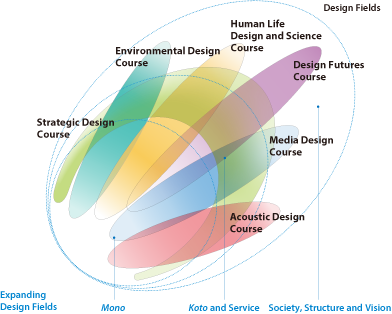

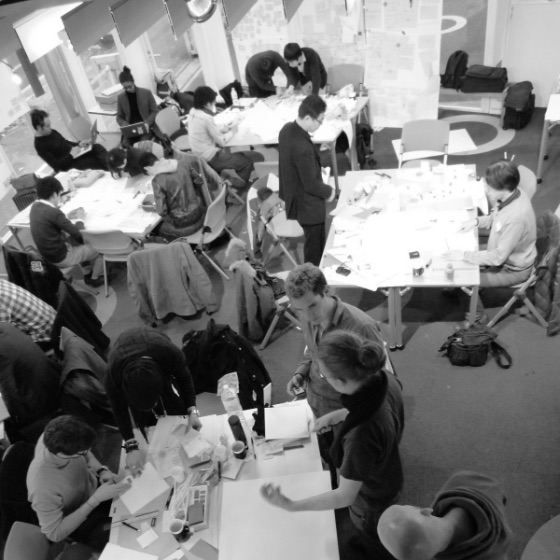
Strategic Design Course
Integrating the Department of Design and Department of Design Strategy, the renewed course is further empowered to create a real-world implementation of innovative ideas through a Design X Business X Entrepreneurship approach.
Students will gain competencies in design strategies that integrate Business and Entrepreneurship, drawing from diverse design expertise in product, environment, and service. There will be a wealth of opportunities to put theory into practice through the courses in partnership with the Business (QBS) and Entrepreneurship programs (QREC), as well as industry projects across profit and non-profit sectors, providing an environment for collaborative and relevant learning. Through such experiences, students will gain design management skills and develop innovative design strategies for our socio-economic futures.
STRATEGIC DESIGN COURSE
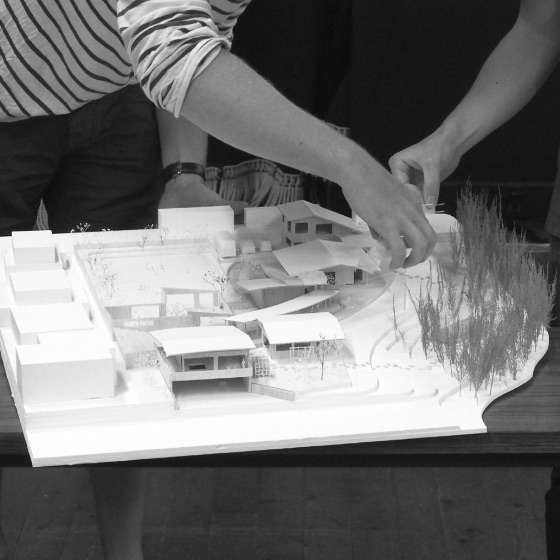
Environmental Design Course
Conducting high-level research and creative design practice, focusing mainly on the environment surrounding people, namely architecture, cities, regions, and landscapes.
Students will learn to realize a more prosperous environmental design by addressing various problems that have become apparent in the present age while keeping in mind the spatial and temporal expansion and diversity of society and fundamentally considering the relationship between humans and the environment. The course also includes the contents recognized as an international architectural education curriculum (Global Architect Program).
ENVIRONMENTAL DESIGN COURSE
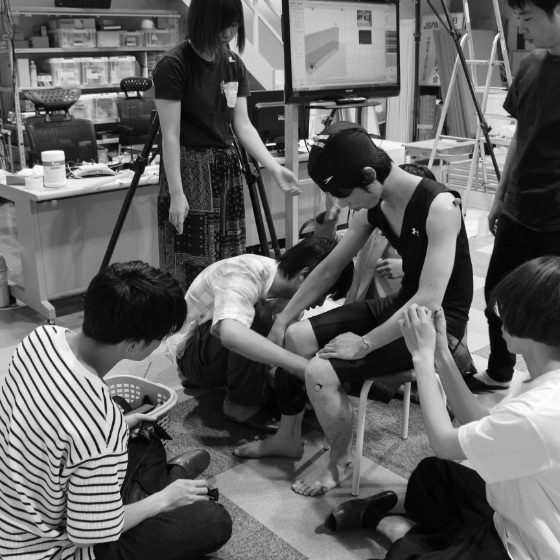
Human Life Design and Science Course
Learning and researching on creating products, services, systems, and living environments based on human characteristics and advanced science and technology.
Students will be able to deepen their specialized knowledge and skills through educational subjects that envision the way of life; explore human physiological, morphological, behavioral, and psychological characteristics, including sensibility and creativity; apply engineering methodologies and life-scapes design. Students will contribute to actualizing a safe, secure, and fulfilling life (human life) upon graduation.
HUMAN LIFE DESIGN AND SCIENCE COURSE
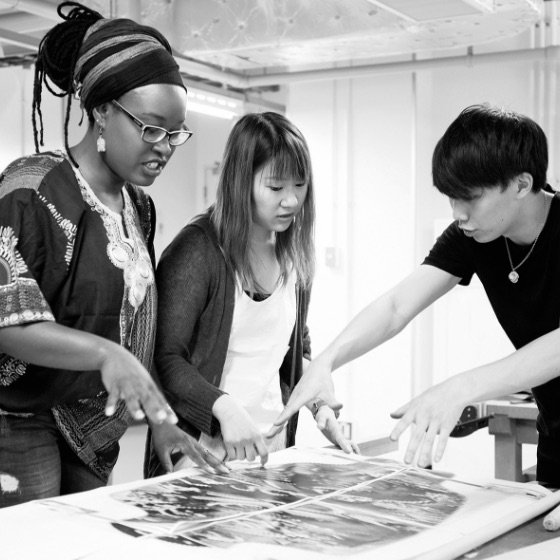
Design Futures Course
Envisioning a future in which human beings can coexist with life forms, each other, and the environment; and design products, systems, and mechanisms to make that future a reality.
Students will learn bioinformatics, bioengineering, art and design, and culture and society. Through exercises in which students think and practice together with artists outside the university, NPO practitioners, and people from various walks of life, they will be able to envision the future of society and develop concrete proposals that bring different and conflicting things together.
DESIGN FUTURES COURSE
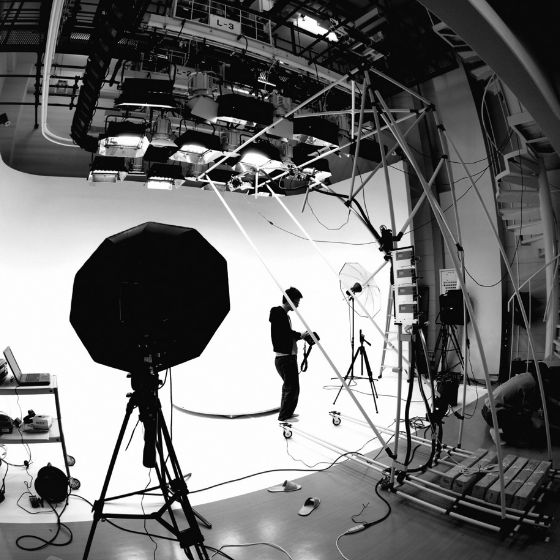
Media Design Course
Creating the future of media communication design that connects people, sensibility to expression, sensation to space, and virtual to reality.
Through the cultivation of scientific knowledge and the ability to think, aesthetic sensibility, creativity, and expression, students will explore and practice media design that “connects”, “communicates”, and “shares” from digital communication, data science, and networks using cutting-edge media technology to human visual science, psychology, artistic expression, and human social communication.
MEDIA DESIGN COURSE
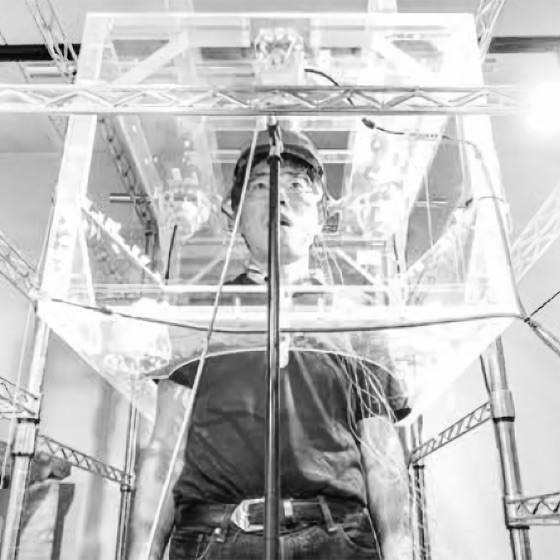
Acoustic Design Course
Acquiring comprehensive problem-solving skills in a wide range of sound-related fields such as art, science and technology.
Through specialized subjects and practical classes, students will acquire and deepen their specialized knowledge of design sensitivities related to sound, acoustic design to create a sound environment suitable for human beings, high quality of acoustic information, and the ability to realize the creation of art and culture related to sound. Students will acquire the ability to embark on a new design field related to sound by approaching the subject of design from a multi-faceted perspective of sound-related culture, environment, and information.
ACOUSTIC DESIGN COURSE
FEATURE 2 Distinctive Curriculum
A curriculum that promotes the integration of design and enables a cross-disciplinary design that is in high demand by society.
Master’s Program
The former two departments, the Department of Design and the Department of Design Strategy, have been integrated into a single department to enable students to better utilize design, by unifying the process from the conception of a new society to concrete social practices.
Subjects from all courses are offered to students as electives according to their research needs, and students can develop their specialties based on the course's core subjects.
The new curriculum offers a wide range of subjects taught in English to develop a flexible and inclusive mindset and cultivate students with global competence.
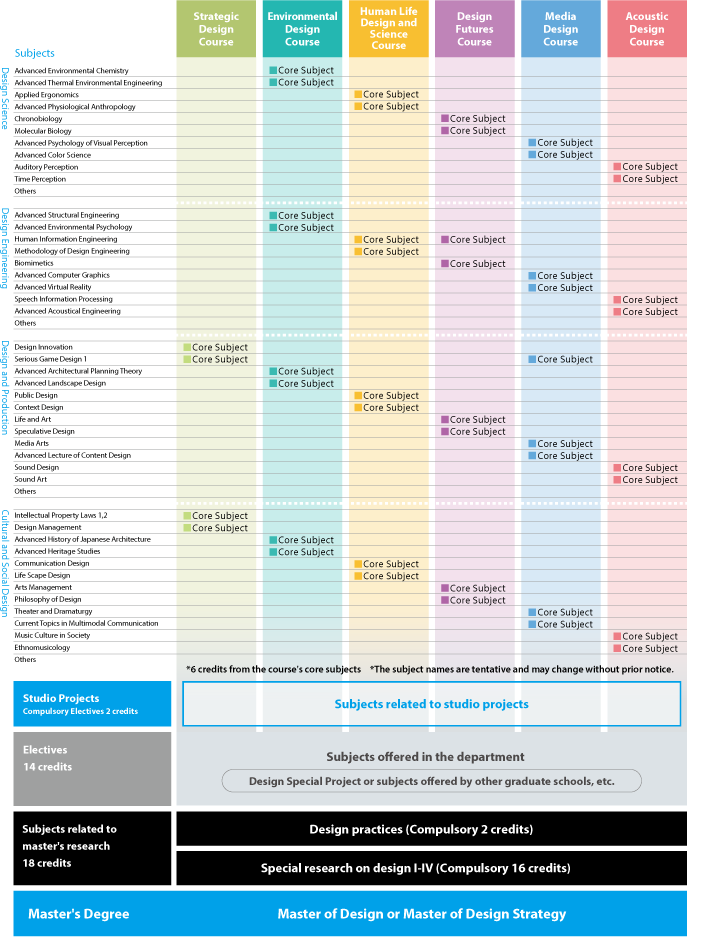
Distinctive Subject: Studio Projects
A cross-disciplinary design studio-based subject, “Studio Projects”, that integrates the elements of “mono”, “koto”, and “vision” through practical exercises.

Examples of Studio Projects
- Future Design Library Project
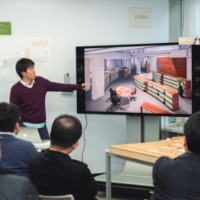
Students with various specialties from courses of Environmental Design, Human Life Design and Science, Strategic Design, Acoustic Design, Media Design, and Design Futures will take part in teams to conduct research and prototyping from the perspectives of environment, architecture, furniture, sound, lighting, media, outreach, and inclusion design, and synthesize them to conceptualize a new library.
- Audio-Visual Expression Through Living Organisms
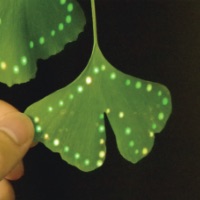
By approaching the subject from the perspective of art and design in BioArt and Biodesign, which is rarely experienced in the conventional design field, students will deepen their knowledge on these areas and nurture advanced expressive skills. Students will visualize the invisible world through animation, music, and other forms and express an in-depth understanding of nature.
FEATURE 3 Professional Certificate Programs
Creative Leadership Program
This program aims to develop advanced design talent with competencies in design, art, business, and leadership. The graduates of the Creative Leadership Program will become the next generation of leaders, who can use a highly creative approach to conceive a long-term vision for society and culture, develop an innovative proposal based on a deep understanding of human beings and the environment, and empathize and collaborate with diverse stakeholders to deliver on such value propositions in society by implementing innovative projects.
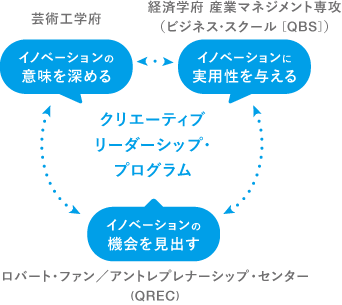
Global Architect Program
This program develops talents with comprehensive design ability with engineering and cultural arts knowledge on architecture and environmental design. Together with the completion of the Architect Program in the School of Design, it is one of the few programs in Japan to be accredited as an international architectural education program based on the “UNESCO-UIA Charter for Architectural Education”. Accredited by UNESCO-UIA Validation Council
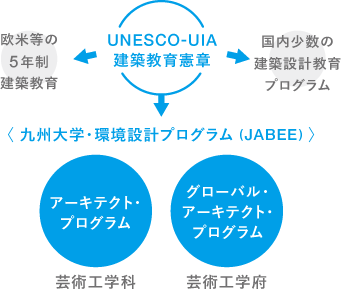
Cultural Hall Management Engineer Training Program
This program aims to develop human resources who have an understanding of the functions of cultural halls such as theaters and music halls as hardware, the knowledge of art and culture of the performances, and the planning and practical skills to oversee the operation of the performances.
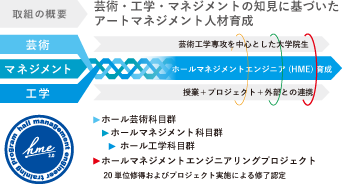
FEATURE 4 Promote Cultural Diversity Among Students
To respect the diversity of values which is essential in producing creative and innovative design, and promote diversity
among graduate students from different cultural backgrounds.
Wide Variety of English-Taught Subjects
All subjects of the master's courses and doctoral program are offered in English. Japanese language proficiency is not be the requirement for the completion of the programs.
Common Admissions Process for All Applicants
The new entrance examinations for all applicants replaced the formerly used special entrance examination for international applicants.
FEATURE 5 Promote Advanced Interdisciplinary Research in the Doctoral Program
Aiming to respect students’ freewill and provide them with more flexibility in terms of research,
the Department of Design and the Department of Design Strategy have been integrated into a single department.
Highly Flexible Research Activities
To respect the perspective of each doctoral student and to motivate and build their confidence, the new doctoral program encourages students to engage in a free and flexible structure of individual research, rather than the conventional method of having a single supervisor.
Diversified Supervision
A system with an optimal group of advisors from multiple fields has been established to ensure the quality of students' research and create an environment with a systematic educational function to acquire a broad intellectual foundation and an advanced and specialized academic research function.

Admissions for Master's Program
For the maximum number of enrolled students, admission schedule and other details regarding admission,
please refer to the application guidelines that will be published on the program reorganization designated web page of the Graduate School of Design or the official website of the Graduate School of Design, Kyushu University.
- Types of Admission
- Students are accepted into graduate school through two types of admissions:
Admission by Personal Merits and Admission by General Entrance Examination (dual application accepted).
Applicants may choose to use either English or Japanese language in both types of admissions. - English Language Proficiency Test
- The English Language Proficiency Test scores will replace the formerly used Foreign Language Test (English) to evaluate the English language abilities of applicants.
Admissions for Doctoral Program
- The admission is held twice a year (April and October).
- Maximum number of enrolled students: 30
- The new entrance examination for all applicants will replace the formerly used entrance examinations (General Entrance Examination, Special Examination for Working Adults and Special Examination for International Students).
Applicants are required to specify a primary academic supervisor of their choice at the time of application for the entrance examination.
Examination format: Interview (face-to-face interview or online interview; interview in English is also possible).
